The Red-Tailed Hawk (Buteo jamaicensis) is a majestic bird of prey renowned for its striking appearance and formidable hunting prowess.
With a wingspan reaching up to four feet, its reddish-brown tail feathers are a distinctive feature, capturing the attention of bird enthusiasts and nature observers alike.
Found across North America, from open fields to wooded areas, these raptors showcase remarkable adaptability and a keen sense of vision, making them highly successful hunters.
The Red-Tailed Hawk has become an iconic symbol of the wild, embodying strength, grace, and the intricate balance of ecosystems.
This introduction offers a glimpse into the captivating world of the Red-Tailed Hawk, inviting exploration into its habits, habitat, and significance in the natural order.
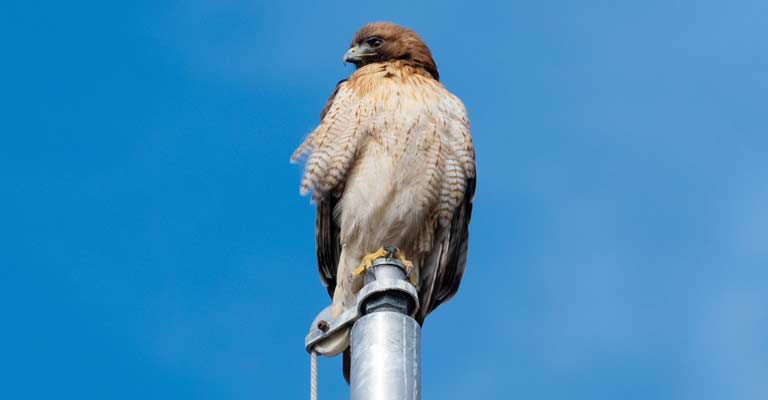
Identifying Characteristics of Red-Tailed Hawk
The Red-Tailed Hawk (Buteo jamaicensis) boasts distinctive characteristics that make it easily identifiable among raptors.
Whether soaring through the sky or perched on a tree branch, keen observers can pinpoint these features to recognize this magnificent bird.
Size and Shape
The Red-Tailed Hawk is a large raptor with a robust build. Its wingspan can span up to four feet, and its body is generally bulky compared to smaller hawk species. The wings are broad and rounded, contributing to its powerful flight.
Red Tail Feathers
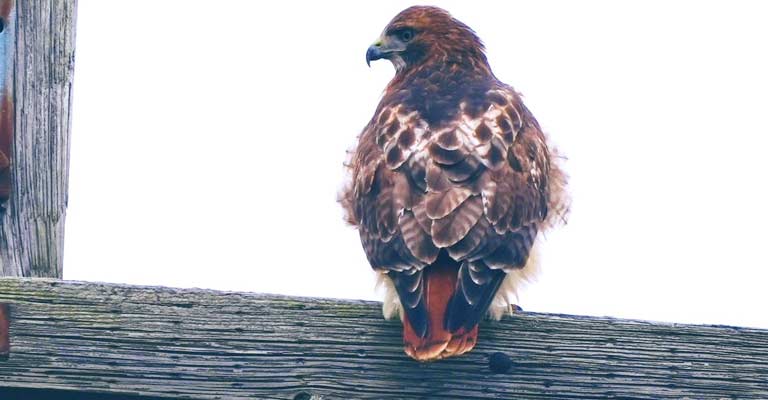
The most iconic feature of this hawk is its namesake—its red tail feathers. However, it’s important to note that not all Red-Tailed Hawks have a completely red tail.
Juveniles may exhibit a more mottled or brownish tail, and in some individuals, the red hue may be subtle. Nevertheless, the tail remains a key field mark for identification.
Coloration
Adult Red-Tailed Hawks typically display a dark brown upper body with a lighter underbelly.
The plumage can vary in shades, and individuals from different regions may exhibit subtle color differences. Juveniles often have a more streaked appearance until they mature.
Distinctive Belly Band
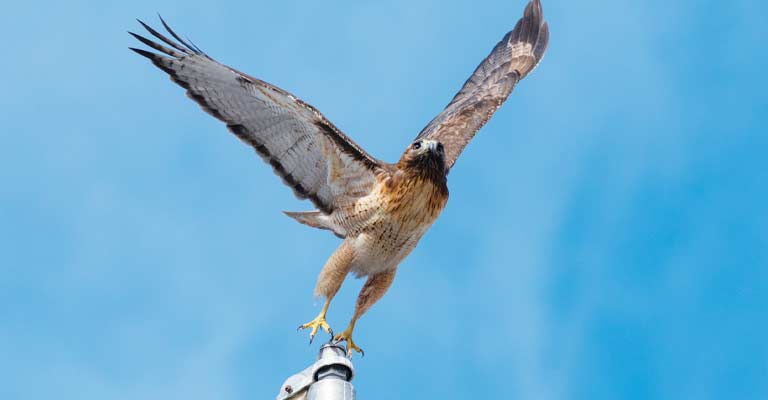
A prominent and diagnostic feature is the belly band, a dark streak that runs across the lower breast and down the center of the underparts.
This band contrasts sharply with the lighter coloration of the rest of the belly and helps distinguish it from other hawk species.
Facial Markings
The Red-Tailed Hawk has a pale face with a dark mark, often referred to as a “comma” or “belly band,” near the eye.
This facial pattern aids in identification, and the absence of distinct markings on the face can help differentiate it from other hawks.
Flight Style
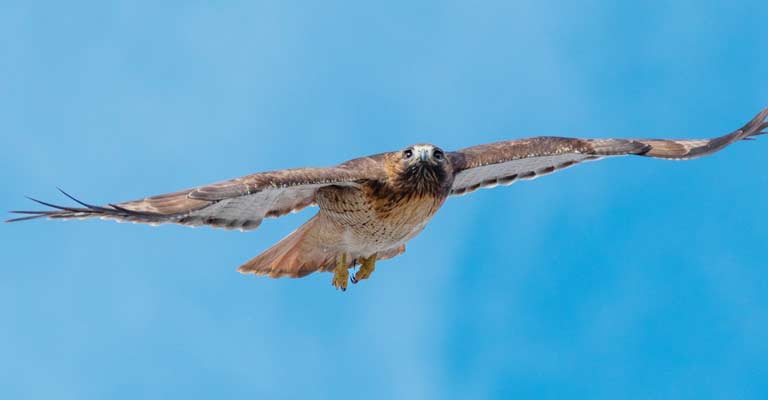
In flight, the Red-Tailed Hawk exhibits a distinctive soaring pattern. Its wings are held in a slight dihedral, forming a shallow V shape. The flight is characterized by powerful, deliberate wing beats followed by periods of gliding.
Habitat and Range
Understanding the bird’s habitat is crucial for identification. Red-tailed hawks can be found in a variety of environments, including open fields, woodlands, and even urban areas.
Their wide distribution across North America makes them a common sight for birdwatchers.
Distinctive Call
The vocalization of the Red-Tailed Hawk is another helpful clue for identification. Its call is a high-pitched, raspy scream that is often described as a “kee-ahh” sound.
Familiarizing oneself with this distinctive call contributes to accurate identification, especially when visual cues are limited.
Recognizing the Red-Tailed Hawk involves a combination of physical characteristics, flight patterns, and habitat considerations.
By paying attention to these key features, bird enthusiasts can confidently identify this magnificent raptor in various settings.
Taxonomy of Red-Tailed Hawk
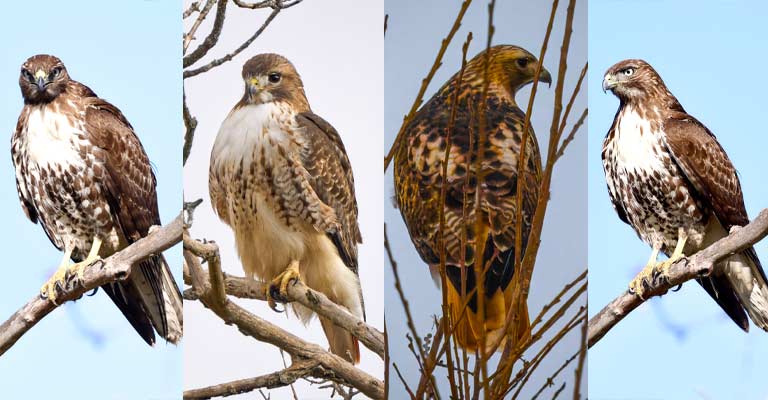
The Red-Tailed Hawk (Buteo jamaicensis) belongs to the domain Eukaryota, indicating that it is a complex, multicellular organism with cells containing a true nucleus.
Within the kingdom Animalia, it falls under the phylum Chordata, characterized by the presence of a notochord at some stage in the life cycle.
Here are all the taxonomical details of this bird:
| Taxonomic Level | Classification |
| Domain | Eukaryota |
| Kingdom | Animalia |
| Phylum | Chordata |
| Class | Aves |
| Order | Accipitriformes |
| Family | Accipitridae |
| Genus | Buteo |
| Species | B. jamaicensis |
The Red-Tailed Hawk (Buteo jamaicensis) is a highly adaptable species with a diverse range of subspecies, each uniquely adapted to its specific habitat. Let’s explore several distinct subspecies of the Red-Tailed Hawk:
Jamaican Red-Tailed Hawk
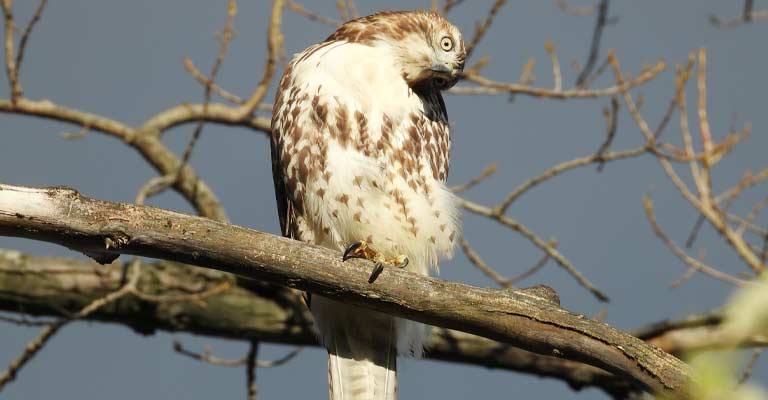
The Jamaican Red-Tailed Hawk, with its scientific name Buteo jamaicensis jamaicensis, is native to Jamaica.
This subspecies may exhibit variations in plumage coloration, adapting to the specific environmental conditions of the Caribbean island.
Alaska Red-Tailed Hawk
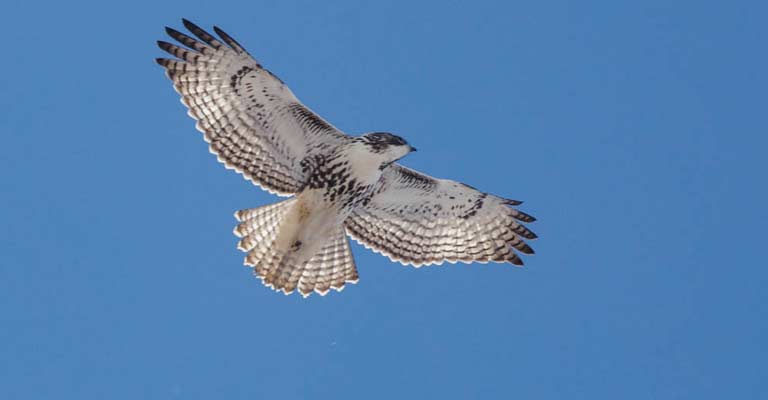
The Alaska Red-Tailed Hawk (Buteo jamaicensis alascensis) is found in the northern regions of North America, thriving in the diverse landscapes of Alaska.
Its adaptations may include features that help it cope with colder temperatures and specific prey availability in the region.
Southwestern Red-Tailed Hawk
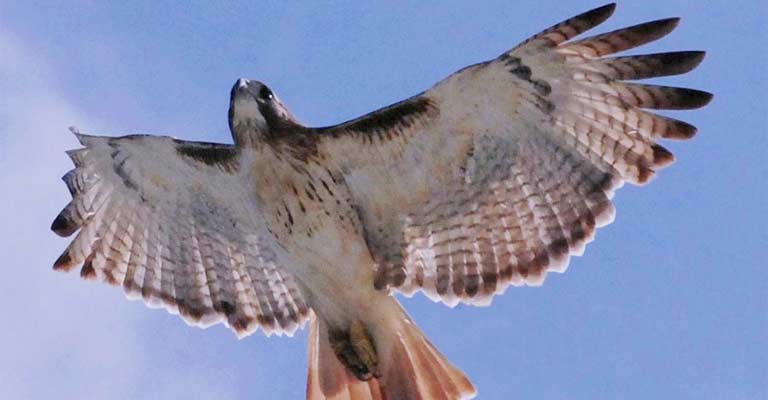
Adapted to the arid landscapes of the American Southwest, the Southwestern Red-Tailed Hawk (Buteo jamaicensis fuertesi) may exhibit color variations and behavioral adaptations suited to the unique challenges of this environment.
Eastern Red-Tailed Hawk
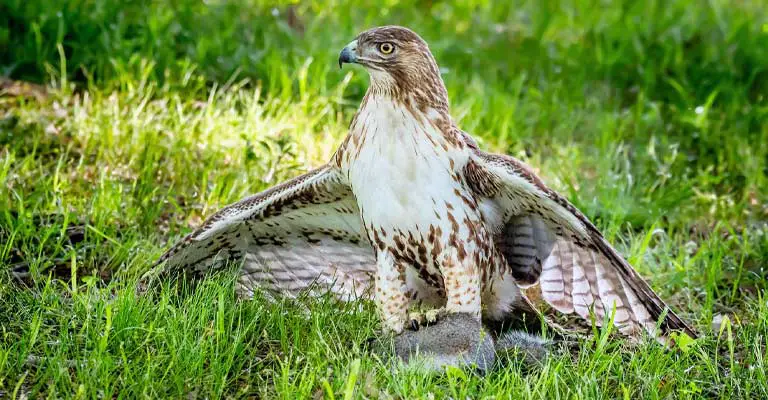
The Eastern Red-Tailed Hawk (Buteo jamaicensis borealis) is prevalent in the eastern parts of North America. This subspecies may showcase characteristics that help it thrive in diverse habitats ranging from forests to open fields.
Florida Red-Tailed Hawk
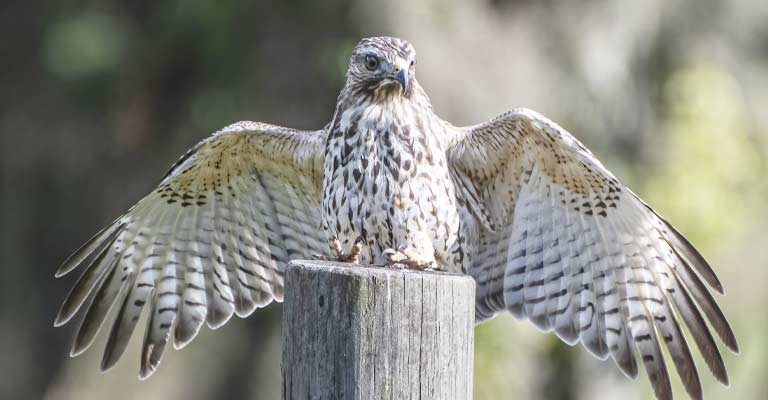
Native to the southeastern United States, including Florida, the Florida Red-Tailed Hawk is likely adapted to the specific ecosystems found in this region, which can include wetlands, forests, and coastal areas.
Krider’s Hawk
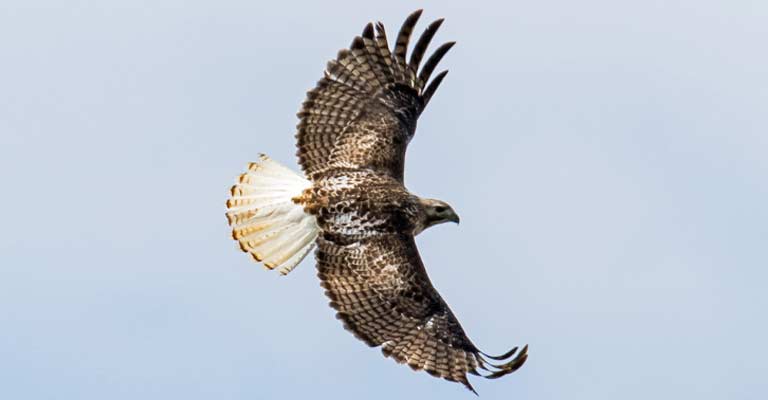
Krider’s Hawk (Buteo jamaicensis kriderii) is a distinctive subspecies known for its pale plumage, particularly in the tail and head. Found in the central parts of North America, it may inhabit prairies and grasslands.
Harlan’s Hawk
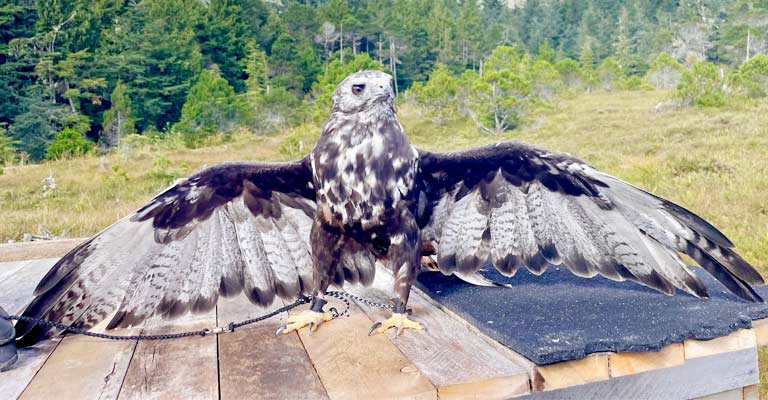
Harlan’s Hawk (Buteo jamaicensis harlani) is a subspecies residing in the northern parts of North America, including Alaska. It is recognized for its dark plumage and may have adaptations suited to colder climates.
Each of these Red-Tailed Hawk subspecies has evolved unique characteristics to thrive in their respective environments.
These adaptations include variations in plumage color, size, and behaviors that enable them to effectively hunt and survive in diverse ecosystems across North America.
Studying these subspecies provides valuable insights into the flexibility and resilience of the Red-Tailed Hawk as a species.
Red-Tailed Hawk Life History
The Red-Tailed Hawk (Buteo jamaicensis), with its majestic appearance and impressive hunting abilities, is a prominent bird of prey found across North America.
Let’s check out its life history with a fascinating journey, encompassing its dietary habits, habitat preferences, nesting behaviors, breeding strategies, etc:
Food
Red-tailed hawks are carnivorous raptors, exhibiting a diverse diet that includes small mammals, birds, reptiles, and occasionally insects.
Their powerful talons and sharp beaks equip them to capture and consume a wide range of prey, with rodents being a primary food source.
Their adaptability allows them to thrive in various environments, from open fields to wooded areas, ensuring a steady supply of potential meals.
Habitat
These hawks are highly adaptable and can be found in diverse habitats, including grasslands, deserts, forests, and urban areas. Their ability to inhabit such varied environments contributes to their widespread distribution across North America.
Range Map
Red-tailed hawks have an extensive range that spans from Alaska and northern Canada down to Panama.
They are year-round residents in many parts of their range, while others may migrate to more temperate regions during harsh winters. The flexibility in their range allows them to exploit a wide array of ecosystems.
Nesting
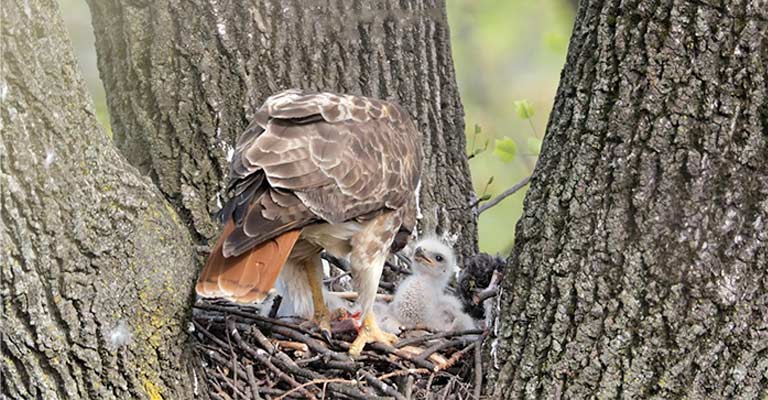
Red-tailed hawks typically build nests high above the ground, often on cliffs, trees, or man-made structures like utility poles. These nests are constructed with twigs and lined with softer materials.
The same nest may be reused over multiple breeding seasons, with both parents contributing to its maintenance.
Here are the nesting details of the Red-Tailed Hawk (Buteo jamaicensis):
| Nesting Parameter | Description |
| Clutch Size | 1 to 5 eggs |
| Number of Broods | Usually 1 per year, occasionally 2 |
| Egg Length | Approximately 2.2 to 2.7 inches (5.5 to 6.9 cm) |
| Egg Width | Approximately 1.8 to 2.2 inches (4.6 to 5.6 cm) |
| Incubation Period | About 28 to 35 days, with both parents participating |
| Nestling Period | 42 to 46 days, until the young fledge |
| Egg Description | Whitish or pale blue-green background with brown speckles |
Breeding
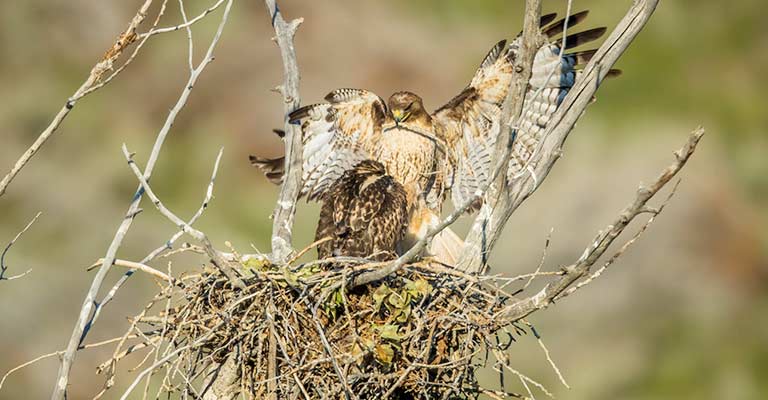
Breeding season for Red-Tailed Hawks usually begins in early spring. Courtship involves aerial displays, vocalizations, and mutual food sharing.
After mating, the female lays a clutch of 1 to 5 eggs, which both parents take turns incubating. The chicks hatch after about a month, and parental care includes feeding and protecting the offspring until they fledge.
Diseases
Red-tailed hawks can be susceptible to various diseases, including avian pox, West Nile virus, and trichomoniasis. These ailments can impact their overall health and reproductive success.
Treatment
Conservationists and wildlife rehabilitators play a crucial role in treating injured or diseased Red-Tailed Hawks.
Medical interventions, supportive care, and, when possible, reintroduction to the wild are part of efforts to ensure their well-being.
Conservation
While the Red-Tailed Hawk is not currently considered a species of concern, ongoing conservation efforts focus on preserving its diverse habitats and addressing threats in maintaining ecological balance.
The life history of the Red-Tailed Hawk is a testament to its adaptability, resilience, and integral role in the ecosystems it inhabits.
Understanding and safeguarding the factors that contribute to its well-being is essential for ensuring the continued presence of this iconic bird in the diverse landscapes of North America.
10 Fun Facts About Red-Tailed Hawk
The Red-Tailed Hawk (Buteo jamaicensis) is a fascinating bird of prey, known for its majestic appearance and impressive aerial prowess. Here are 10 fun facts about these remarkable raptors:
- Signature Feature: The Red-Tailed Hawk gets its name from the distinctive rust-red coloration of its tail feathers, a feature that becomes more pronounced as the bird matures.
- Varied Plumage: While the classic image of a Red-Tailed Hawk includes a dark brown upper body and light underbelly, there is significant plumage variation across individual birds and subspecies, contributing to their adaptability to different environments.
- Eagle Mimicry: In flight, the Red-Tailed Hawk can be mistaken for an eagle due to its large size and broad wingspan. This mimicry may serve as a deterrent to potential predators or competitors.
- Vocal Range: Red-Tailed Hawks are known for their distinctive, high-pitched scream, often featured in movies to represent a generic hawk call. Their vocalizations can vary in intensity and frequency depending on the situation.
- Expert Soarers: These hawks are skilled soarers, utilizing thermal updrafts to effortlessly glide through the air. This energy-efficient flying style allows them to cover large territories in search of prey.
- Predatory Precision: Red-Tailed Hawks are formidable hunters, with excellent eyesight that enables them to spot prey from high altitudes. Their diet includes small mammals, birds, and even reptiles, showcasing their adaptability.
- Territorial Nature: Red-Tailed Hawks are territorial birds, and pairs often maintain the same nesting territory for multiple breeding seasons. They vigorously defend their territory from intruders.
- Urban Adaptation: These hawks have shown adaptability to urban environments, often seen perched on tall structures such as buildings and streetlights. Urban areas can provide suitable hunting grounds and nesting sites.
- Longevity: In the wild, Red-Tailed Hawks can live up to 20 years. Factors such as availability of food, environmental conditions, and avoiding potential threats contribute to their lifespan.
- Conservation Success: Red-tailed hawks have thrived in various ecosystems and are not currently considered a species of concern. Their adaptability and successful breeding contribute to their continued presence across North America.
These fun facts showcase the Red-Tailed Hawk’s versatility, impressive characteristics, and the vital role it plays in maintaining ecological balance in diverse habitats.
Observing these raptors in the wild provides a glimpse into the resilience and majesty of one of North America’s most iconic birds of prey.
Wrapping Up
The Red-Tailed Hawk stands as a testament to adaptability, aerial prowess, and ecological importance. Its distinctive features, diverse subspecies, and fascinating life history contribute to its iconic status in the avian world.
From urban perches to remote woodlands, these raptors thrive across varied landscapes, showcasing their ability to coexist with human-altered environments.
The Red-Tailed Hawk’s role as a skilled hunter, devoted parent, and master of the skies underscores its significance in maintaining ecological balance.
As we appreciate the beauty and resilience of this majestic bird, it becomes clear that understanding and conserving its habitats are crucial for ensuring the continued success of the Red-Tailed Hawk across North America.